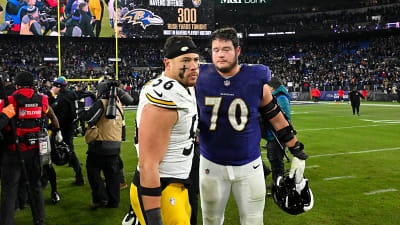
As the Oklahoma City Thunder return to the Western Conference Finals for the first time since 2016, their meteoric rise has been fueled by a historically elite defense, the likely MVP in Shai Gilgeous-Alexander, and a young, versatile core. But as the Thunder prepare to battle the Minnesota Timberwolves, one glaring weakness threatens to undermine their championship aspirations: rebounding.
Thunder’s Rebounding Struggles

Despite their 68-win juggernaut regular season and a playoff run defined by defensive tenacity and transition brilliance, the Thunder’s inability to consistently control the glass has been a persistent issue, especially against physical, playoff-caliber frontcourts. In their hard-fought series against the Denver Nuggets, Oklahoma City was repeatedly outmuscled on the boards, surrendering crucial second-chance points and extra possessions that nearly cost them the series. This vulnerability stems from their preference for smaller, switchable lineups that maximize speed and perimeter defense but sacrifice size and physicality inside.
Chet Holmgren, while a gifted rim protector and floor spacer, is still developing the strength to battle elite bigs night after night. The Thunder’s other frontcourt options, like Isaiah Hartenstein, bring hustle but not the dominant rebounding presence needed to offset this deficiency. Guards and wings are often tasked with helping on the boards, but this approach is less reliable against teams with size and rebounding acumen.
The Timberwolves are uniquely positioned to exploit this flaw. Minnesota boasts a frontcourt anchored by Rudy Gobert, one of the league’s most prolific rebounders, and Julius Randle, whose physicality and relentless motor have transformed the Wolves into a top-five offensive unit over the season’s final months. In the playoffs, Minnesota has outscored opponents by 7.4 points per game in the restricted area, second only to the Thunder, and they generate the highest rate of shots at the rim among all postseason teams.
Gobert’s ability to dominate the glass, particularly on offense, can create a cascade of problems for Oklahoma City. Second-chance points not only demoralize defenses but also slow down the Thunder’s transition game, which is a key source of their offense. If Minnesota’s bigs can consistently generate extra possessions, they’ll force the Thunder to play more half-court offense, where the Wolves’ own elite defense, anchored by Gobert and Jaden McDaniels, can shine.
How the Timberwolves Can Exploit the Flaw
-
Crash the Offensive Glass Relentlessly: Gobert and Randle should attack the boards on every possession, forcing Holmgren and the Thunder’s wings into foul trouble or fatigue. Even Naz Reid off the bench can provide a rebounding spark.
-
Punish Small Lineups: When the Thunder go small to maximize spacing and speed, Minnesota must respond by pounding the paint and leveraging their size advantage, rather than matching small for small.
-
Create Second-Chance Opportunities for Edwards and Randle: Extra possessions mean more chances for Anthony Edwards and Randle to attack a scrambling defense, especially if OKC’s shot blockers are out of position after a rebound scramble.
-
Control the Pace: By dominating the boards, the Wolves can limit OKC’s transition opportunities, forcing them into set defenses where Minnesota’s length and discipline can disrupt Shai Gilgeous-Alexander’s rhythm.
Rebounding is more than just a statistical category, it’s a barometer of physicality and will. If the Wolves establish dominance on the glass early, it can sap the Thunder’s confidence and force head coach Mark Daigneault into uncomfortable adjustments, such as playing bigger lineups that compromise their spacing and defensive versatility. This, in turn, can open up driving lanes for Edwards and Randle, and create mismatches for shooters like Donte DiVincenzo.
Moreover, extra possessions for Minnesota mean fewer transition opportunities for the Thunder, who lead all playoff teams in points off turnovers but are less effective in half-court settings. If the Wolves can limit their own turnovers and maximize their rebounding edge, they can flip the Thunder’s greatest strength, turning defense into offense against them.
During the regular season, the Thunder and Timberwolves split their four meetings, but context matters, Minnesota was missing key frontcourt pieces in most of those games, and the Thunder’s two wins were fueled by a barrage of points off turnovers. In their victories, OKC scored 51 points off 37 Minnesota turnovers. Conversely, when the Wolves limited turnovers and controlled the boards, they were able to claw back from deficits and dictate the game’s tempo.
The Thunder’s youth, depth, and defensive pressure make them formidable, but their rebounding woes are the fatal flaw that could swing the series. If the Timberwolves commit to dominating the boards and limit their turnovers, they have a clear path to an upset and their first NBA Finals appearance. For Oklahoma City, shoring up the glass is not just a tactical adjustment—it’s a matter of survival against a Timberwolves team built to exploit their one true weakness.
More must-reads:
- David Adelman earned his spot with the Nuggets
- Where Knicks' Game 1 collapse ranks in NBA playoff history
- The 'Active NBA players with a double-double in a Game 7' quiz
Breaking News
Trending News
Customize Your Newsletter
 +
+
Get the latest news and rumors, customized to your favorite sports and teams. Emailed daily. Always free!








